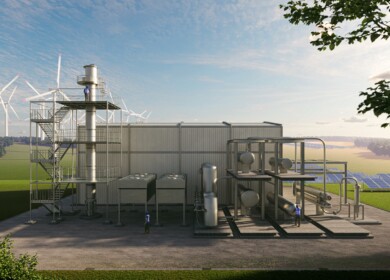India aims to halt urea imports by 2025 with a shift to green production

India’s Ministry of Chemicals and Fertilizers has set a goal to cease all urea imports by 2025, pivoting towards domestic production that integrates environmentally sustainable methods. This strategic move is pivotal for bolstering agricultural productivity and enhancing economic autonomy.
During the fiscal year 2022-23, India’s urea consumption exceeded 36 million metric tonnes (MMT), with imports accounting for about 20% of this total, imposing a significant financial burden of 380 billion Indian Rupee ($4.5 billion). Although domestic facilities have largely met demand through traditional fossil-fuel methods, the imperative for sustainable alternatives has escalated in light of environmental concerns.
Urea is essential for agriculture in India, serving as a primary fertilizer, and it also plays critical roles in the plastics industry and livestock nutrition. Currently, production predominantly uses natural gas—32% of India’s annual consumption—with nearly half of this being imported, thus exposing the country to global market vulnerabilities.
The nation’s carbon footprint is substantial, emitting approximately 2.8 giga tonnes of carbon dioxide (CO2) annually, according to McKinsey & Company. Projections suggest that India will need to manage around 80 Gt of CO2 by 2070 to achieve its net-zero targets. Given India’s significant potential for carbon storage, a robust approach to decarbonization is crucial.
The proposed initiative for green urea production involves capturing CO2 emissions from high-emission industries, such as iron, steel, cement, and coal power. The process includes generating hydrogen through water electrolysis powered by renewable energy and extracting nitrogen from the atmosphere. This method promises a substantial reduction in carbon emissions while fostering a circular economy.
The financial outline for transitioning to green urea production includes a capital investment of INR 45,000 crore and annual operating costs of INR 27,000 crore, primarily for hydrogen production. However, this shift is expected to save approximately INR 12 lakh crore over the lifespan of the production facilities by eliminating the need for urea imports.
The move towards green urea production is anticipated to create new employment opportunities and spur economic growth, aligning with the vision of an Atmanirbhar Bharat (Self-Reliant India). By capturing just 0.36% of total point-source emissions, equivalent to 5.7 MMT of CO2, India could fully meet its urea demand domestically, eliminating the need for imports.
Enjoyed this story?
Every Monday, our subscribers get their hands on a digest of the most trending agriculture news. You can join them too!















Discussion0 comments